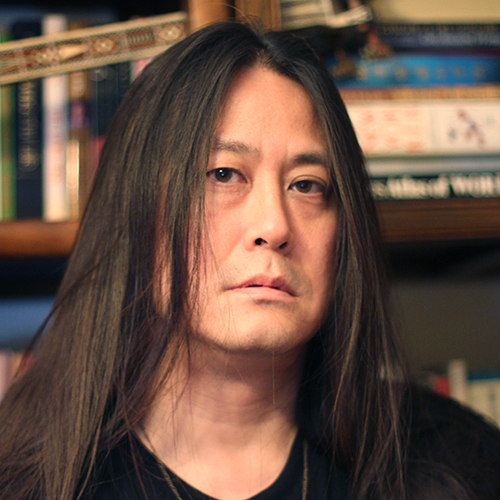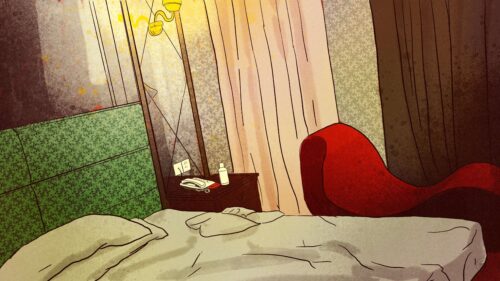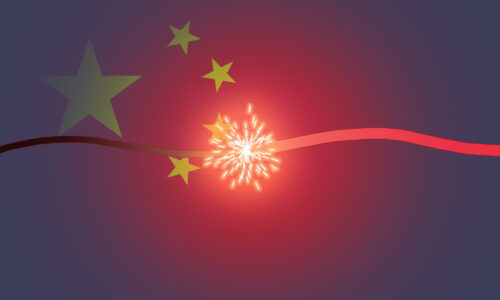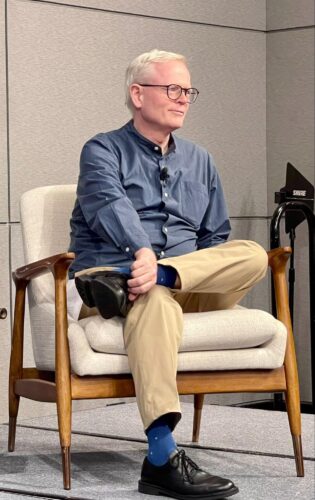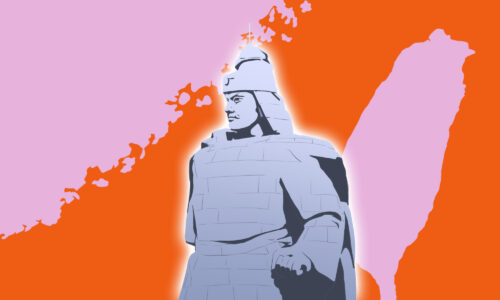Kuora: The An Lushan Rebellion and the fall of the Tang
Dynastic struggle is a favorite subject of many China historians and scholars.

Kaiser, who has always been a historian and a scholar at heart, answered the following question about a pivotal moment in Chinese history — it was bloody, of course — originally posted on Quora on May 12, 2015:
How did the Tang dynasty lose power to be succeeded by the Song dynasty in China?
The decline of the Tang, as Yu-Hsing Chen has correctly noted, really began in the mid-8th century at the time of the An-Shi Rebellion. I’m going to dwell on this chapter of Tang history because it’s central to understanding the dynasty’s slow decline and eventual demise. Many of the problems that made the dynasty so weak after the rebellion are either evident in the rebellion itself, or resulted directly from it.
Yu-Hsing has identified many important factors in the Tang decline, but there are three other things I would focus on. They are 1) the dynasty’s persistent dependence on regional and often only semi-sinicized, semi-nomadic militarists; 2) the loss of control of the very important pastureland and the horse trade, which sapped the military might available to the very cavalry-dependent Tang military; and 3) the inward, anti-foreign turn that the Tang state and society took, which stood in very stark contrast to the cosmopolitan embrace of the foreign that characterized the dynasty in its first, more vigorous half.
Yes, the dynasty continued on for another century and a half (to 907) and there were actually significant stretches where stability and peace prevailed, where meaningful administrative reforms were implemented, and where culture continued to flourish. But fundamental problems were created by or exacerbated by the mid-8th-century rebellion, and Tang never truly recaptured the glory of the 开元盛世 (kāiyuán shèngshì), its belle epoch — the Xuanzong reign, 712–755.
First, a bit about the An-Shi or Ān Lùshān 安禄山 Rebellion (in Chinese, literally “the Chaos of An-Shi” 安史之乱 [Ānshǐzhīluàn]). The “An” refers to An Lushan, and the “Shi” to a follower of his named Shi Siming 史思明, who carried on the rebellion after An’s death. An Lushan was an important military commander of Sogdian and Turkic descent. Lushan appears to have been the sinicized form of his Sogdian name, Rokhshan. A favorite of Yang Guifei 杨贵妃, or “Precious Consort Yang,” a favorite of the Xuanzong Emperor (a.k.a. Tang Minghuang, ruled 712–755), An Lushan clashed with her cousin, Yang Guozhong 杨国忠, who was chancellor during the latter years of Xuanzong’s reign, and believing a plot was afoot to strip him of command, he rebelled in 755.
What was a half-Turkic, half-Sogdian doing commanding some of Tang China’s most important military units? A bit of background about Tang is in order.
During the long period between the effective collapse of the Eastern Han dynasty in the late 2nd century (it formally ended in 220, but for the last 36 years or so was a fiction) until the Sui dynasty reunified China in the late 6th century, China was very much divided, with at best very short periods of quasi-unity. During that time, North China saw many different groups of proto-Mongolic, and later Tungusic and Turkic peoples, cross the line between steppe and sown and carve out kingdoms for themselves on the corpse of the Han dynasty. By the time of the Sui reunification, the aristocracy of North China was heavily intermarried with these people from the steppe. They affected dress that was heavily influenced by Central Asia (trousers, mainly), they valued horsemanship and horseback archery, and they played a game that’s an unmistakable ancestor of polo.
The Li family dynasts who overthrew Sui in 618 to found Tang were very much of that Sino-Turkic aristocracy. The first great emperor of Tang, Li Shimin 李世民, even had a felt tent in his courtyard, and was known to be a great rider and archer. The Tang’s chief enemies were the more fully nomadic peoples to the north: various Turkic confederations. They fought them in very much the same manner, with horse, composite bow, and lance.
This is why mounted troops were important. And because horse archery is a difficult skill to master and the best were those basically born in the saddle, Central Asian troops were always highly valued. The best forces were drawn from the border areas, the marches, that they were protecting mainly from people not much different from themselves. Think of Rome’s auxiliaries in the 4th century: Gauls, Franks, and Goths in the West, and further east, your Scythians and Sarmatians and what have you.
An Lushan commanded such a force, centered around modern Hebei province in the area surrounding modern Beijing. (Indeed, during the rebellion he established a short-lived state in Beijing, called Yan after the Yan kingdom of the Warring States period).
The irony is that the commanders and troops that were raised to end the An-Shi Rebellion were also often drawn from this same type, but the price for their help was even greater autonomy. These 节度使 (jié dù shǐ) — military governors or military commissioners of regional commanderies — were really just straight-up warlords. Both An Lushan and the most effective general who fought him and Shi Siming, a general named Guo Ziyi 郭子仪 (who family legend, without any evidence I’ve ever seen, claims is my ancestor), were jiedushi. Their internecine power struggles, and their increasing independence from the court, would be a major cause of the Tang decline.
It’s significant that the first emperor of the Song dynasty, which (after a 54-year period of chaos and disorder that followed the Tang’s actual collapse in 907) reunified China in 960, put an end to the jiedushi system basically by summoning all the military governors to a banquet and convincing them to take a nice severance package and retire from military life.
That’s the first factor, then: An Lushan’s uprising actually ushered in a period of even greater warlord power, with increasingly ineffective central control with all that entailed — declining tax receipts, no upkeep of important imperial projects like irrigation systems and canals, inability to suppress the inevitable peasant uprisings like the Huang Chao rebellion, which really delivered the mortal blow to the dynasty in the 880s.
The second factor I mentioned was the loss of control of vital pastureland and horses. (I believe this argument was one I came across in a work by Mark Elvin called The Pattern of the Chinese Past, but it’s been a long time!). After An Lushan rebelled, the Tang court was actually forced to flee the imperial capital, Chang’an (modern Xi’an). The largely unguarded capital was left wide open to the predations of other “barbarians,” and the Tibetans advanced against the city in 763 — they did not press their siege that time — and again in 765. This time, Guo Ziyi, who had led the first successful attack, managed to turn the Uyghur allies of the Tibetans against them, and brought them over to the Tang side of the fight. The Tibetan problem was solved, but Uyghurs thereafter dominated the horse trade out of Chang’an, and also came to control the strategic pasturelands of the Gansu Corridor. Tang thereafter had seriously reduced access to quality horseflesh.
And finally, the inward turn I mentioned. Tang China was famously cosmopolitan in its heyday, and much of its strength derived from the openness of and diversity of its society, and the syncretic nature of its cultural and intellectual life — a bit like America, perhaps, today. That changed after the An Shi rebellion. Things that were foreign were suddenly regarded with a certain distrust. Students of Chinese history, at least back in my day, would learn that this inward turn was best exemplified by an aggressively conservative Confucian scholar named Han Yu (768–824). Han Yu, who is widely regarded as a forerunner of the Confucian revival of the Song and Ming dynasties that would come to be called Neo-Confucianism, was (it is said; I can’t personally attest to this) an extremely gifted prose stylist and a very influential writer. Among his most famous works is memorial — a screed, really — against Buddhism, which he wrote on learning that the reigning emperor planned on erecting some monument for, and throwing a grand procession to commemorate, a Buddhist relic, reportedly the finger bone of the Gautama Buddha. He attacked Buddhism on the grounds that it was foreign, which was a tremendous change from the earlier half of the dynasty when there was a craze for all things foreign.
The blow that mortally weakened Tang was the Huang Chao rebellion, which raged for a full decade from 874 to 884. It was in many ways your standard, textbook peasant uprising resulting from all the usual markers of a dynastic decline: famine, natural catastrophe, burdensome taxation, eunuch corruption, and what have you. Huang Chao himself though was an interesting character. He was very wealthy, as the son of very successful salt merchants (or smugglers), and despite his first-rate education was a failed civil service exam candidate. He was able to basically buy himself a substantial private army. It was a lieutenant of Huang Chao, first bought off by the Tang court, who finally brought the rotting dynasty to its final ignominious end.
Kuora is a weekly column.
